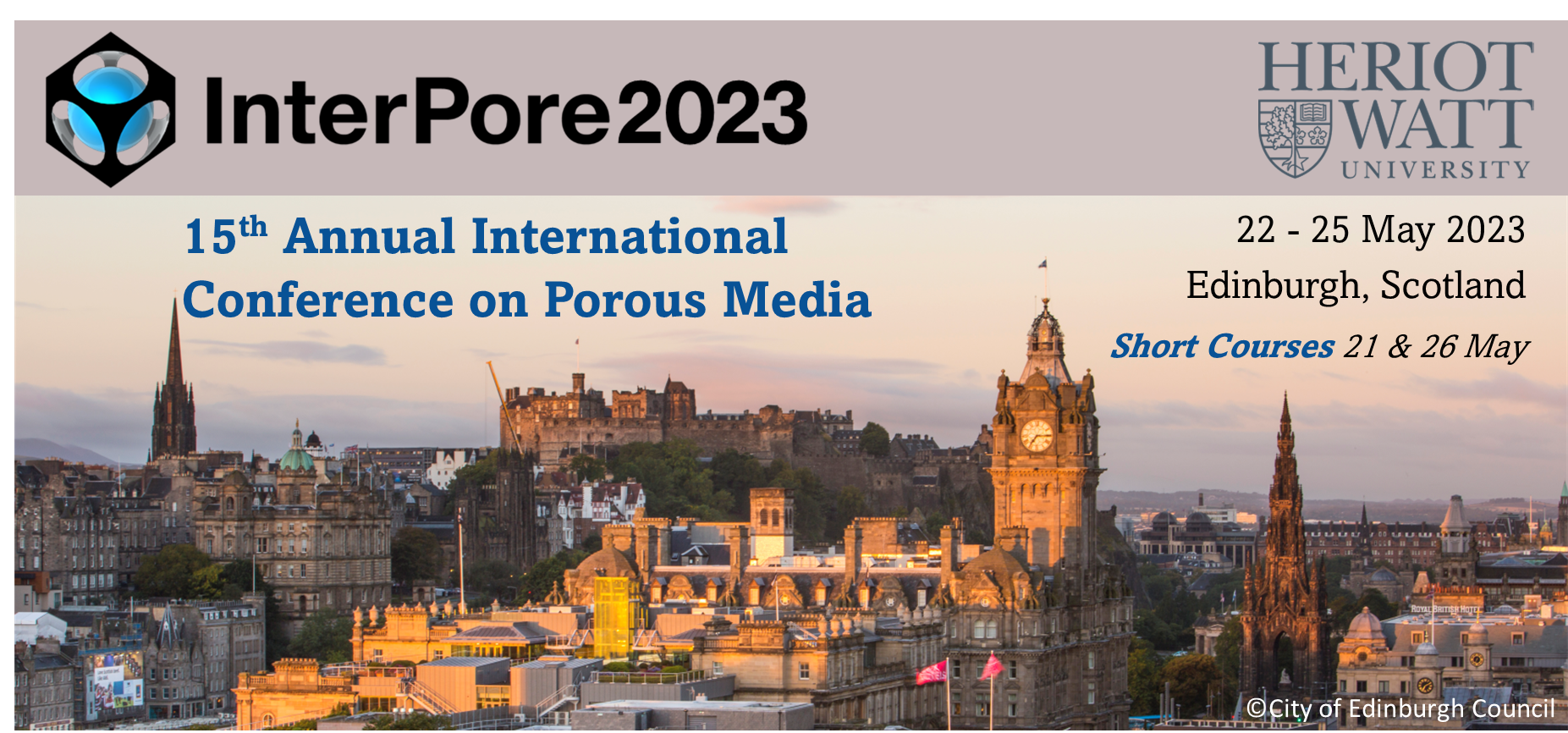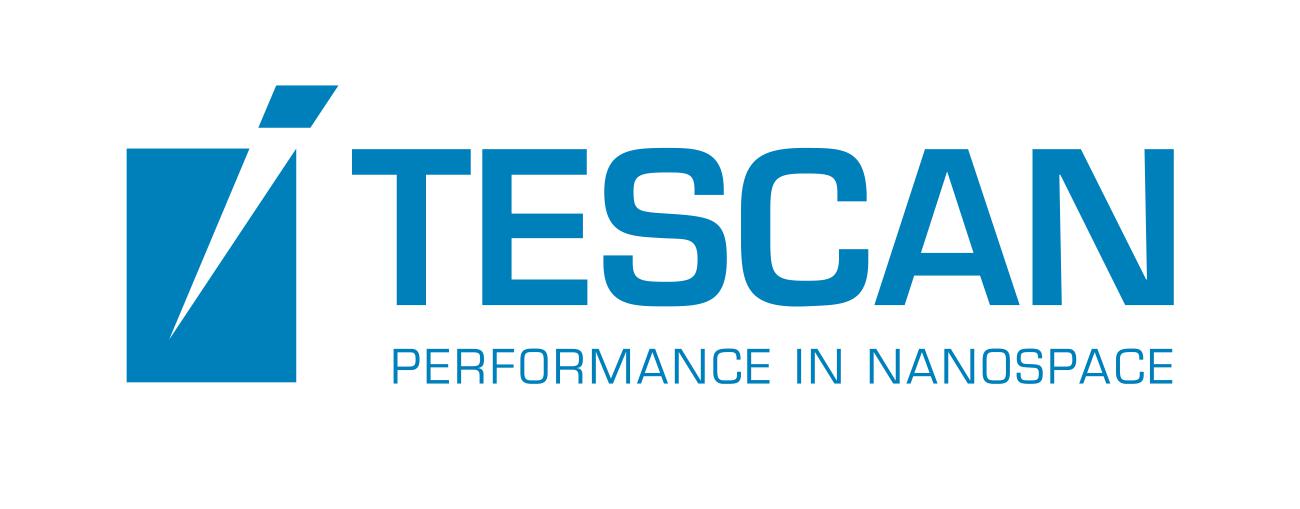Speaker
Description
Dissolution mass transfer of trapped phases in porous media is an important phenomenon in various fields, such as groundwater contamination [1–3], groundwater remediation [4], geological carbon sequestration [5], and energy storage in geological formation [6]. In the process of dissolution mass transfer, a fluid, which could be a liquid, gas, or supercritical fluid, is trapped in porous media by a capillary force. In the presence of another flowing fluid the trapped phase then gradually dissolves with solubility as the driving force.
The difficulties in investigating this phenomenon is the method to observe the dissolution process inside the porous medium. Earlier studies were mainly conducted using upscaled mass transfer approaches [1–4], which was modeled as a single grid block of mass transfer without knowing the pore scale processes in the porous media. As a result, the interfacial area, which the place for the mass transfer to occur, was unknown. For that reason, the developed mass transfer models [1–4] were phenomenological to the porous media.
In this work, we used X-ray CT microtomography (micro-CT) to observe the pore-scale process of dissolution mass transfer inside a porous medium. The main goal of using the micro-CT is to measure the capillary trapping interfacial area during the dissolution process, and thus, mass transfer model that is non-phenomenological to the porous media characteristics can be developed. To generate the mass transfer model, we performed comprehensive experimental investigations [7–12] by using various porous media characteristics (unconsolidated porous media particle size and wettability), various trapped phase types (non-aqueous phase liquids (NAPLs) and gases), and various water velocity.
Along with the development of this models, additional phenomena that affect the mass transfer rate were elucidated. The first phenomenon is the dissolution fingering [9], which occur due to slight differences in local permeability caused by the spatial distribution of the trapped phase in the porous media. Dissolution fingering was found to reduce the mass transfer coefficient to a third. Another phenomenon is the two-stage dissolution process [7,8] that occurs due to the rapid dissolution rate of the capillary trapping represented by the dissolution ratio (ratio between solubility and density). As a result, dissolution occurs much faster than the solute advection, resulting in the accumulation of high local solute concentrations that hinder the mass transfer process.
Eventually, a non-phenomenological mass transfer model based on Sherwood, Reynolds, and Schmidt numbers was developed. To the best of our knowledge, this is the first non-phenomenological model of capillary trapping dissolution mass transfer based on Sherwood, Reynolds, and Schmidt numbers. We believe that this work could provide valuable insights for the porous media community, especially interfacial phenomena across scales.
References
[1] P.T. Imhoff, P.R. Jaffé, G.F. Pinder, An experimental study of complete dissolution of a nonaqueous phase liquid in saturated porous media, Water Resour. Res. 30 (1994) 307–320. https://doi.org/10.1029/93WR02675.
[2] S.E. Powers, L.M. Abriola, W.J. Weber, An experimental investigation of nonaqueous phase liquid dissolution in saturated subsurface systems: Steady state mass transfer rates, Water Resour. Res. 28 (1992) 2691–2705. https://doi.org/10.1029/92WR00984.
[3] C.T. Miller, M.M. Poirier-Mcneill, A.S. Mayer, Dissolution of trapped nonaqueous phase liquids: mass transfer characteristics, Water Resour. Res. 26 (1990) 2783–2796. https://doi.org/10.1029/90WR01694.
[4] H. Geistlinger, A. Beckmann, D. Lazik, Mass transfer between a multicomponent trapped gas phase and a mobile water phase: Experiment and theory, Water Resour. Res. 41 (2005) 1–15. https://doi.org/10.1029/2004WR003885.
[5] R. Huang, A.L. Herring, A. Sheppard, Investigation of supercritical CO2 mass transfer in porous media using X-ray micro-computed tomography, Adv. Water Resour. 171 (2022) 104338. https://doi.org/10.1016/j.advwatres.2022.104338.
[6] M. Lysyy, G. Ersland, M. Fernø, Pore-scale dynamics for underground porous media hydrogen storage, Adv. Water Resour. 163 (2022) 104167. https://doi.org/10.1016/j.advwatres.2022.104167.
[7] A. Patmonoaji, T. Suekane, Investigation of CO2 dissolution via mass transfer inside a porous medium, Adv. Water Resour. 110 (2017) 97–106. https://doi.org/10.1016/j.advwatres.2017.10.008.
[8] A. Patmonoaji, M. Nasir, M.A. Mahardika, Y. She, T. Suekane, A Unique Dissolution Behavior of Trapped CO2 into Flowing Water Inside a Porous Medium Compared with Other Gases, J. MMIJ. 137 (2021). https://doi.org/10.2473/journalofmmij.137.91.
[9] A. Patmonoaji, Y. Hu, M. Nasir, C. Zhang, T. Suekane, Effects of Dissolution Fingering on Mass Transfer Rate in Three-Dimensional Porous Media, Water Resour. Res. 57 (2021) 1–18. https://doi.org/10.1029/2020WR029353.
[10] A. Patmonoaji, Y. Hu, C. Zhang, T. Suekane, Dissolution Mass Transfer of Trapped Phase in Porous Media, in: Porous Fluids - Adv. Fluid Flow Transp. Phenom. Porous Media, IntechOpen, 2021.
[11] Y. Hu, C. Zhang, A. Patmonoaji, Y. She, S. Matsushita, T. Suekane, Pore-scale investigation of wettability impact on residual nonaqueous phase liquid dissolution in natural porous media, Sci. Total Environ. 787 (2021) 147406. https://doi.org/10.1016/j.scitotenv.2021.147406.
[12] Y. Hu, A. Patmonoaji, H. Xu, K. Kaito, S. Matsushita, T. Suekane, Pore-scale investigation on nonaqueous phase liquid dissolution and mass transfer in 2D and 3D porous media, Int. J. Heat Mass Transf. 169 (2021) 120901. https://doi.org/10.1016/j.ijheatmasstransfer.2021.120901.
| Participation | In-Person |
|---|---|
| Country | Japan |
| MDPI Energies Student Poster Award | No, do not submit my presenation for the student posters award. |
| Acceptance of the Terms & Conditions | Click here to agree |







